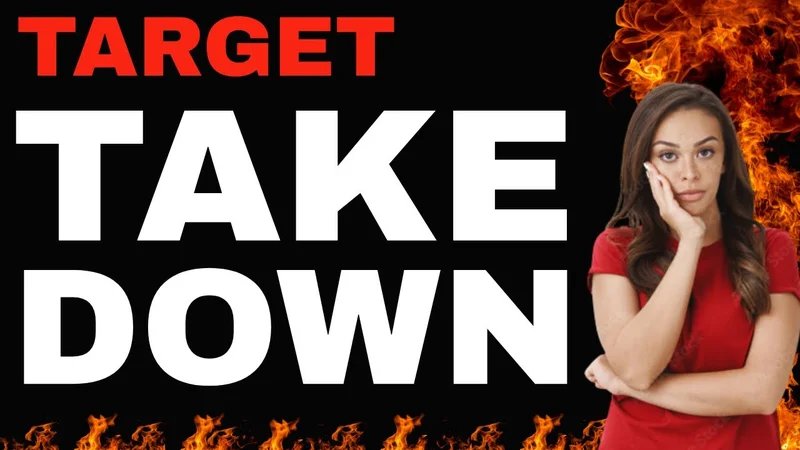Target Layoffs: Breaking Down the Numbers and Corporate Spin
Target’s Layoffs Aren’t About ‘Complexity.’ They’re About a 65% Stock Plunge.
On Thursday, a memo from Target’s incoming CEO, Michael Fiddelke, landed in the inboxes of corporate employees. It announced the elimination of 1,800 headquarters jobs—about 1,000 layoffs and 800 unfilled positions—and instructed staff to work from home the following week, a cold, clinical buffer for the coming notifications. The stated reason for this "necessary step" was to combat internal "complexity" that has "slowed decisions."
Corporate memos are an art form in obfuscation. They are designed to project control and strategic foresight while delivering unpleasant, often reactive, news. And Fiddelke’s memo is a masterclass in the genre. "Complexity" is a beautifully sterile word. It sounds like a solvable engineering problem, a matter of untangling wires and optimizing workflows.
But the real reason for these layoffs isn't found in the carefully chosen words of a corporate memo. It’s found on a stock chart. It’s a story told not by HR-approved talking points, but by the brutal, unforgiving logic of the market.
The Anatomy of a Divergence
Let’s be precise. Since its all-time high in late 2021, Target's stock has plummeted 65%. To put that figure in context, consider its primary competitor. Over the last five years, while Target’s stock has withered by 41%, Walmart’s has surged 123%. This isn’t a market-wide trend or a temporary dip. This is a fundamental, years-long divergence between two retail giants, and it points directly to the core of Target’s problems.
The divergence is rooted in a simple distinction: wants versus needs. Approximately 50% of Target's sales are derived from discretionary items—stylish home goods, cheap-chic apparel, the kind of things you don’t need but are fun to buy. At Walmart, that number is closer to 40%, with a much heavier anchor in groceries and everyday essentials.
Think of it like this: Target and Walmart are two different ships that were sailing in the same calm, stimulus-fueled sea of 2020 and 2021. Target’s ship was a stylish cruiser, loaded to the gunwales with colorful, desirable, but ultimately non-essential cargo. Walmart’s was a sturdier, less glamorous freighter, filled with grain, fuel, and medicine. When the economic weather turned—when inflation spiked and household savings evaporated—which ship do you think started taking on water first? The one carrying the nice-to-haves, not the must-haves. Four years of stagnant sales aren’t a mystery; they are the mathematical outcome of this business model hitting a wall of consumer austerity.

I've analyzed countless corporate restructurings, and the language is always the first place to look for the real story. The use of "complexity" here is a classic misdirection. Is Target’s corporate structure truly more complex than Walmart’s, an organization with more than double the revenue and a global footprint? Or is "complexity" just a convenient, blameless scapegoat for a strategy that has failed to adapt? The data strongly suggests the latter.
A CFO’s Solution
The identity of the man delivering the news is just as telling as the news itself. Michael Fiddelke isn't a merchant prince or a visionary marketer; he's the former Chief Financial Officer (and current COO). He’s a numbers guy, and this move is a classic CFO solution: when revenue is stalled and the market has lost faith, you cut costs to protect margins. It’s a defensive maneuver, not an offensive one. Since May, Fiddelke has been overseeing an "Enterprise Acceleration Office" to simplify operations. These layoffs are the first major, public outcome of that effort.
This isn’t to say Target doesn't have operational inefficiencies. After a decade without significant layoffs, corporate bloat is almost a given. But framing this as a proactive strike against "complexity" masks the reactive reality. The company is being forced to do this by a 65% share price collapse and the glaring success of its biggest rival. The problem isn’t that decision-making was "slowed"; it’s that the wrong decisions were made—specifically, the decision to remain so heavily leveraged to the whims of the discretionary consumer.
This move, where Target cuts 1,800 corporate jobs in its first major layoffs in a decade, raises more questions than it answers. Is this cost-cutting a prelude to a more fundamental strategic pivot, or is this the entire strategy? Will trimming 8% of the corporate workforce magically re-align the company’s product mix with consumer reality? And how does a company famous for its brand—its "Tar-zhay" appeal—maintain that identity while signaling to the market that it’s now focused on ruthless efficiency? The two feel fundamentally at odds.
The employees who will be let go next week aren't victims of "complexity." They are casualties of a balance sheet and a stock ticker. They are the human cost of a multi-year strategic miscalculation.
The Cost of Being Cool
Let’s drop the pretense. This isn't a bold reimagining of Target's corporate culture. It's a painful, but entirely predictable, market correction executed on the company's payroll. The "complexity" narrative is a face-saving exercise for a leadership team that watched its stock get cut in half while its primary competitor thrived. Fiddelke, the former CFO, is simply doing what the numbers told him he had to do. This is the price Target is paying for its long-held identity as the purveyor of affordable cool in an economy that can no longer afford it. The memo was about process; the reality is all about the price.
